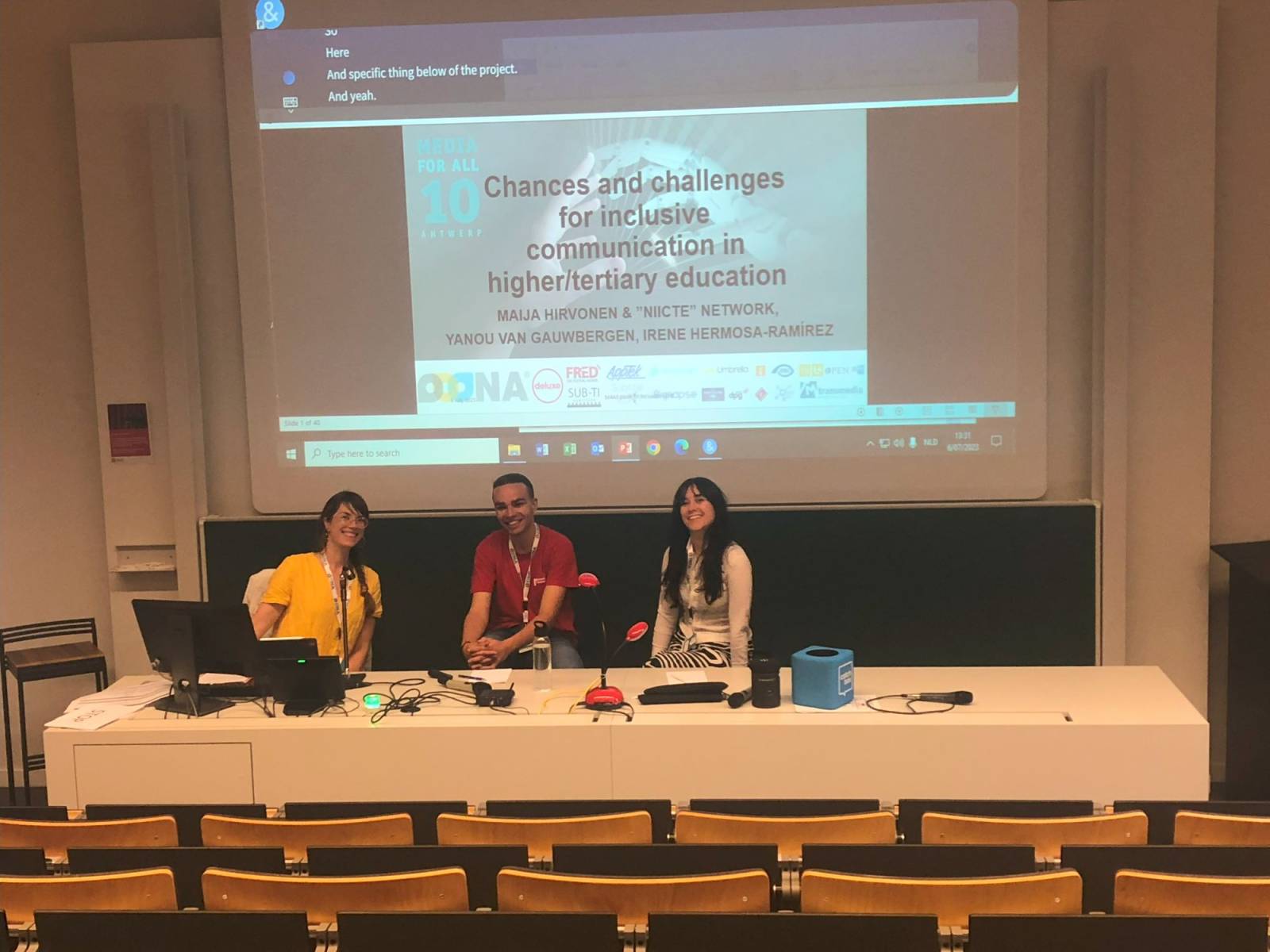The title of the panel is Chances and challenges of multimodality and translanguaging for inclusive communication in higher/tertiary education – An international and interdisciplinary perspective.
Follow the Media for All 10 Conference website for more details: Meet us in the panel on Thu 6, July!
Panelists:
Maija Hirvonen (convener of the panel), Tampere University, Faculty of Information Technology and Communication, Languages Unit & Tampere Accessibility Unit, Network of Inclusion and Inclusive Communication in Tertiary Education
Research focus: accessibility of communication and culture (especially Audio Description), asymmetric interaction (between blind and sighted people), distributed cognition.
Yanou van Gauwbergen, University of Antwerp, Department of Applied Linguistics, Translation and Interpreting, Translation, Interpreting and Intercultural Studies Research Group
Research focus: accessibility through interlingual live subtitling in higher education.
Irene Hermosa-Ramírez, Autonomous University of Barcelona, Department of Translation, Interpreting and East Asian Studies, TransMedia Catalonia research group, ATHENA project (Bringing Accessibility and Design for All into Higher Education Curricula)
Research focus: accessibility and universal design in higher education curricula and syllabi.
Abstract:
This interactive panel invites anyone interested in accessible higher education to hear the panelists’ experiences and join the discussion. The panel is organized by the international Network on Inclusion and Inclusive Communication in Tertiary Education (NIICTE) whose goal is to support partnerships that link research in inclusion in the higher education context.
Inclusion in educational settings encompasses teaching arrangements and learning materials, didactic approaches as well as multimodal and translanguaging practices for participants with dis/abilities and specific needs. This refers to participants using specific communication methods, such as sign languages or audio-description and braille, but it also refers to the adaptation of (language) behaviors for students with mental diversity.
The increase in digital and multimodal teaching brings along various challenges and chances for inclusion. Neurodiverse individuals may experience difficulty filtering relevant stimuli during information processing and interpretation and social interaction due to stimulus overload. On the other hand, studies on multimodality have established that combining different modalities according to the Universal Design for Learning (UDL), such as visualization, body movement, and written or oral communication, can support mutual understanding in an interaction involving participants with special abilities and needs.
In the light of these chances and challenges, the panel discusses with the audience the following topics:
- How can and should we bring Accessibility and Design for All into Higher Education curricula? Training and education on these subjects are currently on the rise across society (from companies to universities). Developing and testing guidelines and recommendations will stimulate innovative learning and teaching practices to tackle social inclusion of persons with disabilities.
- What is the role of human and technological agents in enabling inclusion? The use of automatic translation and transcription (live subtitles) in the classroom, for instance, can be taken to replace human translators and interpreters, but what are the consequences?
- How can we improve the inclusion of students with mental health issues (e.g., anxiety or depression), which fall under the category of invisible dis/abilities, and what multimodal practices can be applied in teaching/learning contexts? The digitalization of teaching at universities offers both opportunities (i.e., digital recordings) and risks due to social acceleration for these groups.
- What does Universal Design mean in a digital teaching context? The pandemic and its mental health challenges have made it easier for students with invisible dis/abilities to come out. New solutions from the context of universal design (i.e., diversification of communication channels, use of clear language in the presentation of complex issues) can thus be tried out more easily.
- How can websites of higher education institutions support or prevent inclusion? A look at websites of higher education institutions shows that the design of their interactivity can be challenging due to incoherent terminology, unclear positioning of actors, and lack of intersectionality for the exchange with heterogeneous students. It all becomes more difficult when websites are (automatically) translated for international students with dis/abilities.
